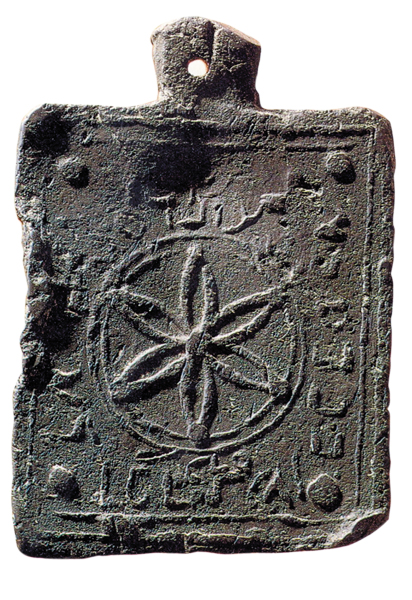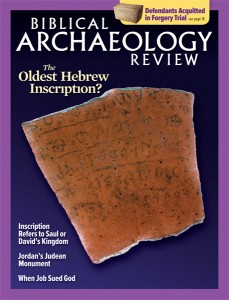
A. Bread stamp
B. Royal ping-pong paddle
C. Passover trivet
D. Lead weight
E. Priestly amulet
Answer: (D) Lead weight
This decorated lead weight, discovered by Amos Kloner and Yotam Tepper 25 years ago at Horvat ‘Alim in Israel, was crucial for dating the hiding complex there.1 Most of the area had been looted previously, but the weight and a number of bronze and silver coins found in the excavation securely dated the tunnels to the Second Jewish Revolt, also known as the Bar-Kokhba Revolt (132–135 C.E.). The inscription on the other side of the weight (not pictured) reads, “Shim‘on ben Kosba, Prince of Israel and his administrator,” which suggests that it may have belonged to Bar-Kokhba himself (his family name was Kosiba). The inscription on the pictured side identifies Bar-Kokhba’s market administrator as Shim‘on Dasoi. Ancient literary sources and archaeological evidence make clear the Jewish rebels’ strategy of living and meeting in underground tunnels and chambers to avoid discovery by the Roman soldiers. Weights like this one were used to identify the amount of any product for sale or use as taxes, according to established Roman standards. Measuring only 3.5 by 2.6 by 0.3 inches, this small piece of lead weighs nearly 2 pounds.
Already a library member? Log in here.
Institution user? Log in with your IP address.

